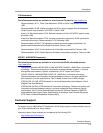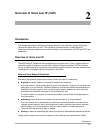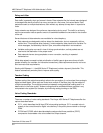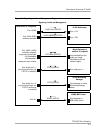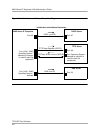
Introduction
2-1
2
Overview of Voice over IP (VoIP) 2
PIn
Introduction 2
This chapter describes the differences between data and voice networks, and the factors that
influence the performance of VoIP. The installation and administration of 4600 Series IP
Telephones on Avaya media servers, and the installation and configuration of DHCP and TFTP are
addressed.
Overview of Voice over IP 2
The 4600 Series IP Telephones allow enterprises to use Voice over IP (that is, packet-switched
networks) instead of telephony over the Public Switched Telephone Network (PSTN). However,
the use of data networks for transmitting voice packets poses the problem that data networks were
not designed for the specific qualities required by voice traffic.
Data and Voice Network Similarities 2
Data and voice networks share similar functions due to the nature of networking.
■ Signaling is used to establish a connection between two endpoints.
In a voice network, signaling helps identify who the calling party is trying to call and where the
called party is on the network. Traditional telephony uses terminals with fixed addresses and
establishes a fixed connection for the communication session between two such terminals,
allocating fixed bandwidth resources for the duration of the call.
IP communications constitute a connectionless network, having neither fixed addresses nor
fixed connections.
■ Addressing. Each terminal on a network must be identified by a unique address.
In a voice network the unique address is a permanent attribute, based on international and
national numbering plans, and/or local telephone company practices and internal customer-
specific codes. In IP communications, dial plans track extension numbers assigned to
terminals. No fixed connection path is needed.
■ Routing is related to addressing and allows connections to be established between endpoints.
Though these functions are common to data and voice networks, the implementations differ.









